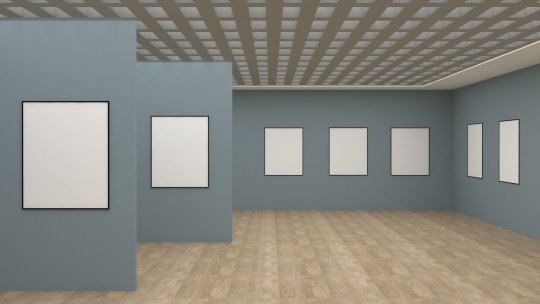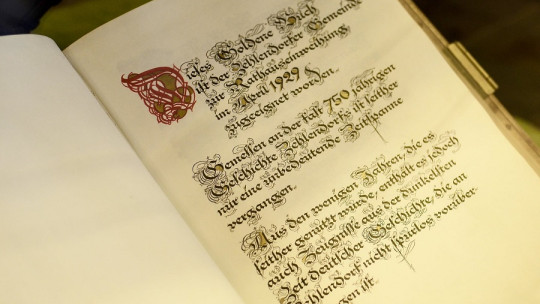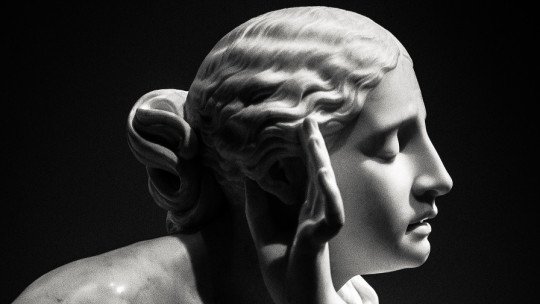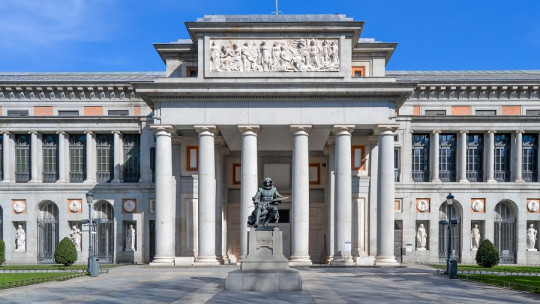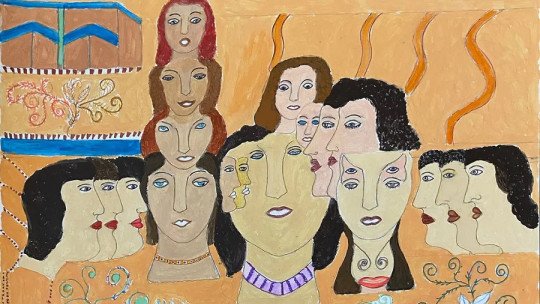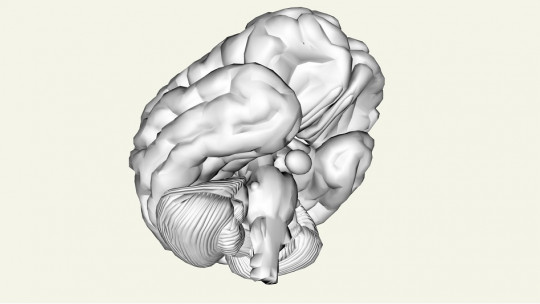Despite being the artistic testimony of our time, contemporary art is still one of the great misunderstood, sometimes due to lack of knowledge, sometimes because it is considered an “opportunistic” art that takes advantage of the market boom to profit.
Leaving this issue aside, within contemporary art there are artists who have created surprising and interesting work. Many of them (deservedly) are included in the lists of the most influential and sought-after artists internationally. Below you will find a list of some of the most important contemporary works as well as a short review of its authors.
10 examples of contemporary art
First of all, it is necessary to define the context in which we move in this article. What do we call “contemporary art”? In general terms, these are the artistic creations that appeared after the end of the Second World War and that reach our contemporaneity, that is, the 21st century.
With that said, let’s review 10 of the most important works of contemporary art, from Jackson Pollock’s colorful and vivid compositions of the 1950s to the kitsch creations of Jeff Koons. Enjoy the trip.
1. Convergenceby Jackson Pollock
Jackson Pollock (1912-1956) triumphed within what is known as abstract expressionism and laid the roots of an American “national” style, at a time when the country wanted to differentiate itself at all costs from the “socialist realism” of the USSR. His characteristic style, based on spots, lines and curves of great chromatic profusion, is inseparable from the 1950s.
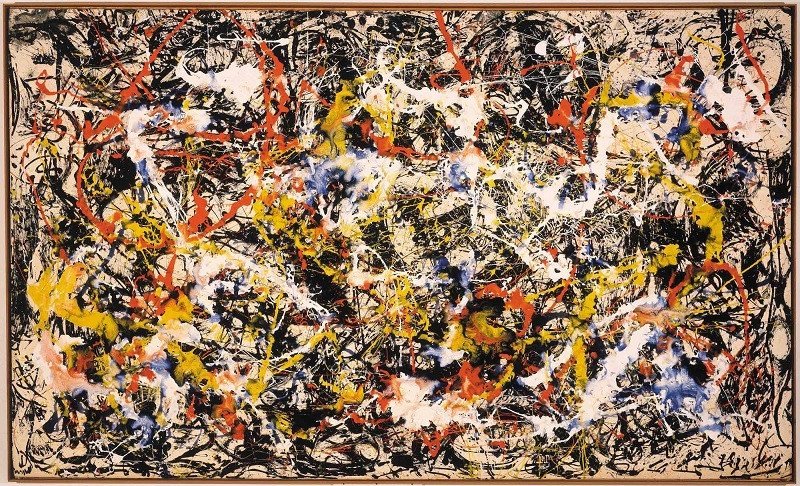
Pollock’s works are born from the emotions of the artist, who created by letting himself be carried away by his inner vagaries, in line with the “automatic painting” preached by the surrealists and the precepts of Jung. The technique invented by Pollock, his famous dripping, consisted of dropping drops of paint on the canvas lying on the floor
From all this it is deduced that the motifs of the compositions are not static and are subject to the emotional state of the creator. For this reason, Pollock was extremely bothered when viewers of his work tried at all costs to unravel the “meaning” and search for a relationship between the title of the work and what they saw. To avoid this, the artist ended up titling them only with numbers.
2. The graffiti by Belin
Inseparable from his native Linares, the street work of graffiti artist Miguel Ángel Belinchón (b. 1979), better known by his stage name Belinis currently recognized worldwide. The enormous quality of their work places the graffitia subgenre of urban art, in a prominent place on the international art scene
He picked up the spray can for the first time at the age of fifteen, at a time (the 1990s) when urban art was beginning to proliferate in cities. Completely self-taught, in 2002 he began to dedicate himself professionally to his art, and currently he is one of the most sought-after young artists. His work (on the cover) is characterized by an absolutely astonishing hyperrealism.
3. Blow-up IXby Marta Penter
The Brazilian Marta Penter (b. 1957) is one of the greatest exponents of hyperrealist art. Her works capture the concrete moment and everyday life from an absolutely detailed perspective and explore relationships and human behavior. Although most of her work is done in black and white (with small details of color that capture the viewer’s attention), the one we present is one of the few in her artistic corpus that is in full color..
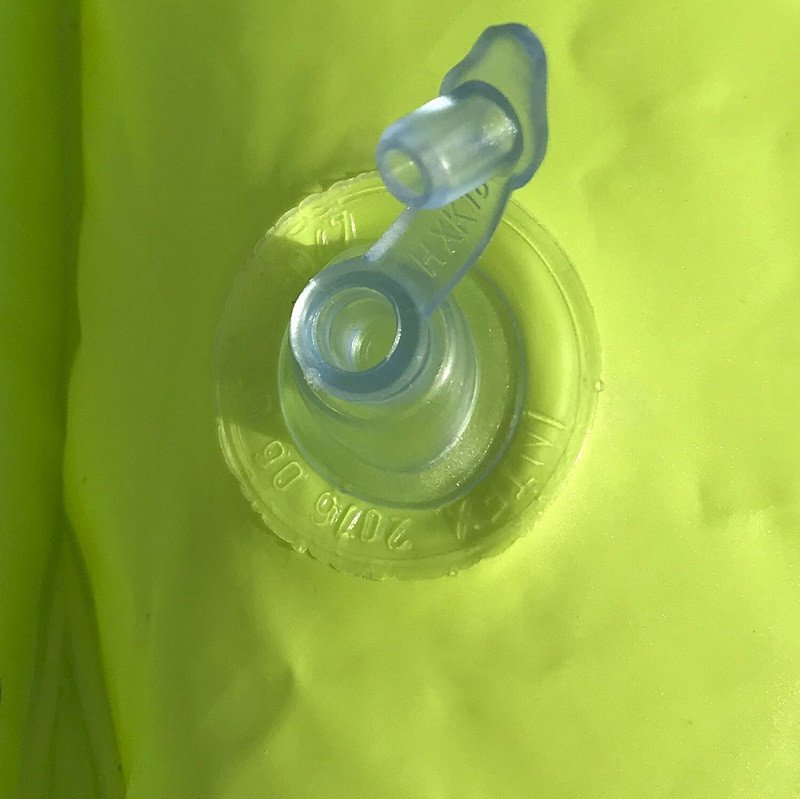
Penter’s great mastery of capturing textures and turning any trivial anecdote into a work of art is evident in this canvas , where the artist captures a plastic surface of what appears to be a beach ball. Specifically, she focuses the image on the mouthpiece and the opening through which the ball is inflated, something absolutely nondescript that, in Penter’s hands, becomes a masterpiece of painting.
4. Elciego Winery (Álava, Spain), by Frank Gehry
Frank Gehry is the architect of the Guggenheim Museum in Bilbao, so we can have an idea of the importance of his work in contemporary architecture. But, unlike that one, the winery that he built in the town of Elciego (Álava, Spain), is usually quite forgotten in the list of the artist’s productions, despite being known as “the Guggenheim of Rioja.”
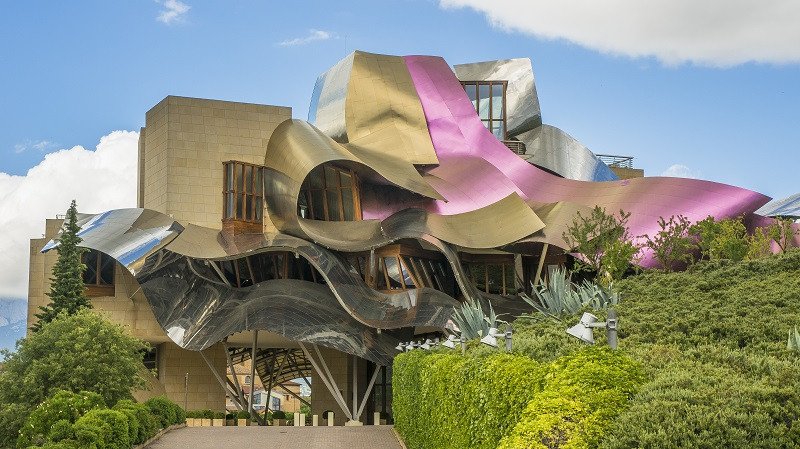
Elciego is a town in Rioja Alavesa known for its excellent wines. For a very famous wine brand, Gehry designed between 2003 and 2007 a surprising building that presents the characteristic sinuous shapes that we can also see in Bilbao The combination of golden and reddish tones gives the building great personality and connects it with the wine production of the area.
5. The Sydney Opera House, by Jørn Utzon
Another of the great references of contemporary architecture is undoubtedly the spectacular Sydney Opera House, designed by the Danish Jørn Utzon (1918-2008). The “shells” that make up the emblematic roof were a true innovation in the year of their inauguration, 1973: they are enormous prefabricated semispheres that support their weight on concrete panels.
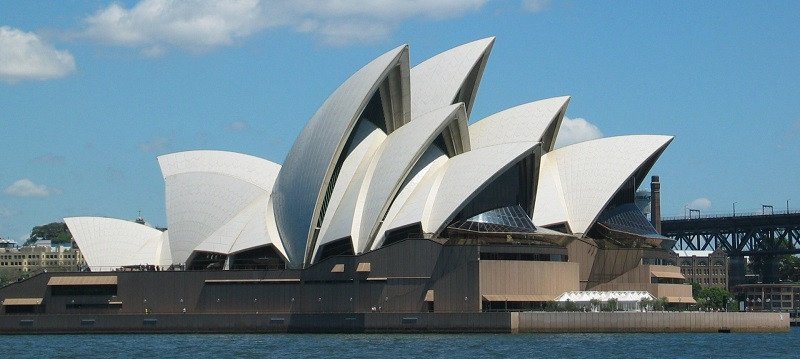
The most impressive thing about the building is that it is located “on the sea” (in Sydney Harbour), which, together with its original roof, gives the impression of looking at a ship with its sails spread.
6. The MAXXI, by Zaha Hadid
The world-renowned architect Zaha Hadid (1950-2016) is responsible for the Roman headquarters of the Museo Nazionale delle Arti nel XXI Secolo (MAXXI). After the competition promoted in 1998 by the Italian Ministry of Culture, the following year she entrusted the project to the Iranian artist, who developed it with three base materials: concrete, steel and glass
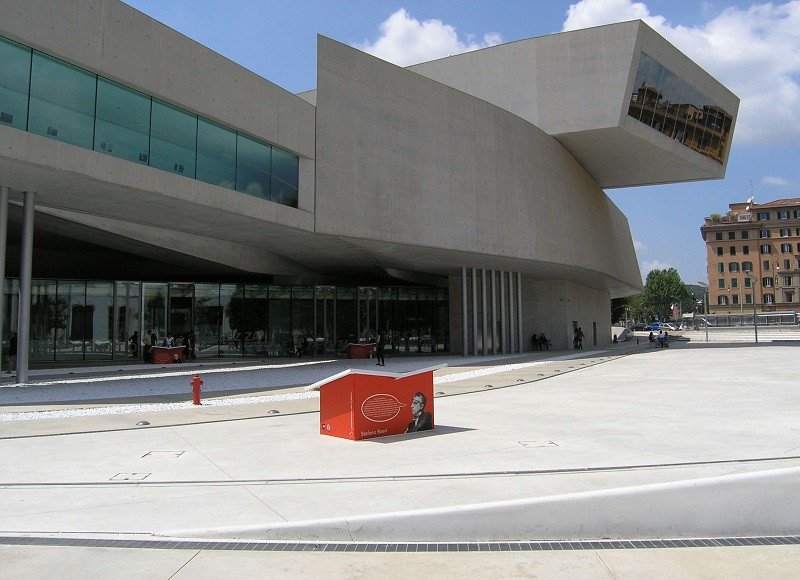
The result is a monumental building that combines curved elements with straight lines to create unique spaces with great personality.
7. The Metaphysical boxes by Jorge Oteiza
From the beginning, the sculptor Jorge Oteiza sought emptiness as the essence of his creation. His experience on Orio beach made him come into contact with this emptiness from his earliest childhood; a topic that concerned him, not only on a sculptural level, but also on a philosophical level.
Before reaching the metaphysical boxes as the culmination of his artistic work, he had already experimented in this sense through The apostolate of Aranzazu and other works. The spirituality of the empty body of the apostles was not understood in their time and they remained for a long time lying in the ditches of the road that goes up to the Gipuzkoan sanctuary.
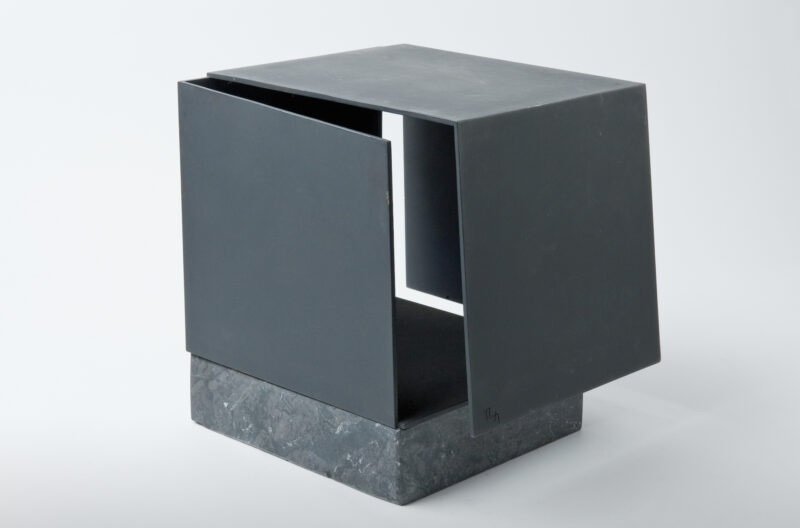
The evolution towards abstraction in his work caused Malevich to build his series of metaphysical boxes based on plans , first in small format (which we can currently see in the Oteiza Museum in Alzuza, Navarra) and which were later captured in large format and preserved in various museums (MACBA in Barcelona, the Reina Sofía in Madrid and the Artium in Vitoria, among others). ). In Oteiza’s metaphysical boxes, the sculpture is not the sheet metal, but the void that it delimits.
8. The man who marchesby Alberto Giacometti
Giacometti’s characteristic alambic being was, for Jean-Paul Sartre, something in the middle of being and nothingness, a kind of apotheosis of 20th century existentialism. To tell the truth, contemplating these strange anthropomorphic sculptures awakens in us a concern that is difficult to explain.
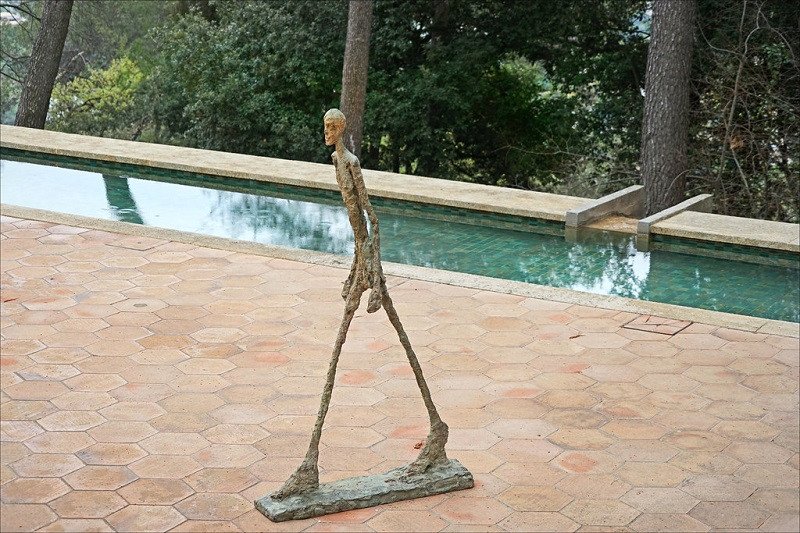
The man who marches (the man who walks) barely seems to stand; The filigree structure of it seems to recreate skin and bones Perhaps Giacometti wanted to express the force that continues to drive man despite being close to the end.
9. The Portón-Pasaje, by Cristina Iglesias
The Spanish artist Cristina Iglesias (b. 1956), designed these spectacular doors for the Prado Museum, in Madrid; specifically, for the additional wing of the building, the work of architect Rafael Moneo.

The rough surface of bronze imitates geological forms The enormous structure consists of six pieces and has a total weight of no less than 22 tons. To open the Gate-passage, a hydraulic mechanism is necessary that the Prado opens at certain hours, so that visitors can contemplate the work in its entirety.
10. Balloon Dogby Jeff Koons
This sculpture by Jeff Koons became infamous in February 2023 when, during an exhibition, one of the visitors carelessly smashed it into pieces. It was a small design in striking blue, characteristic of the artist, which represented a balloon dog of the type created at fairs
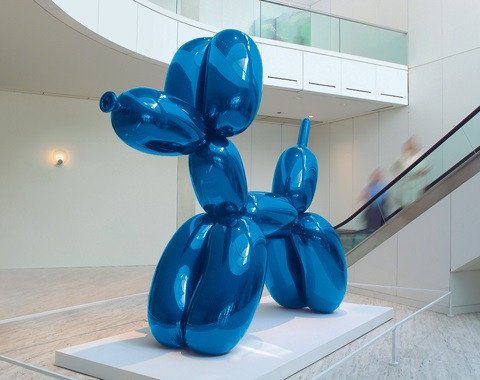
Made with a mixed technique that includes Limoges porcelain and steel, Koons’s series of “balloon dogs” is a basic creation for understanding contemporary kitsch art.


